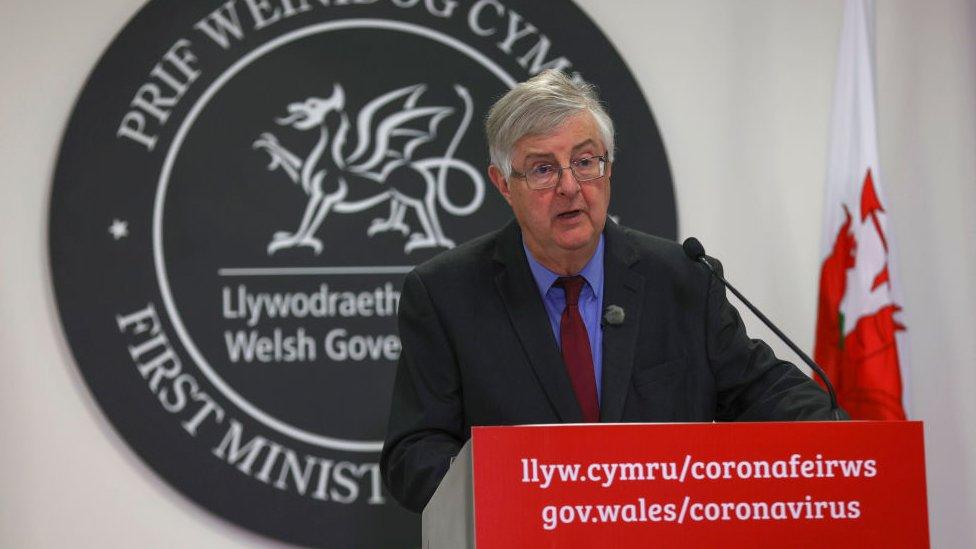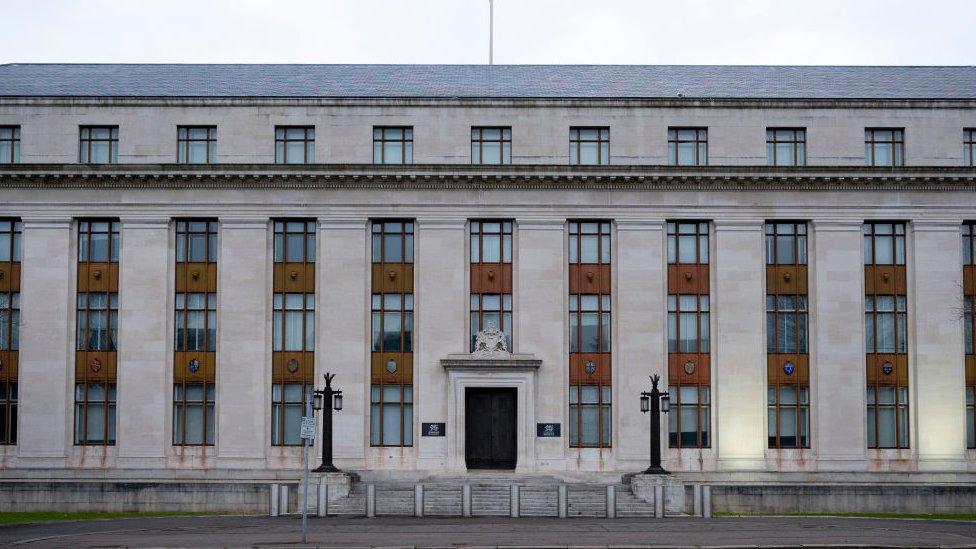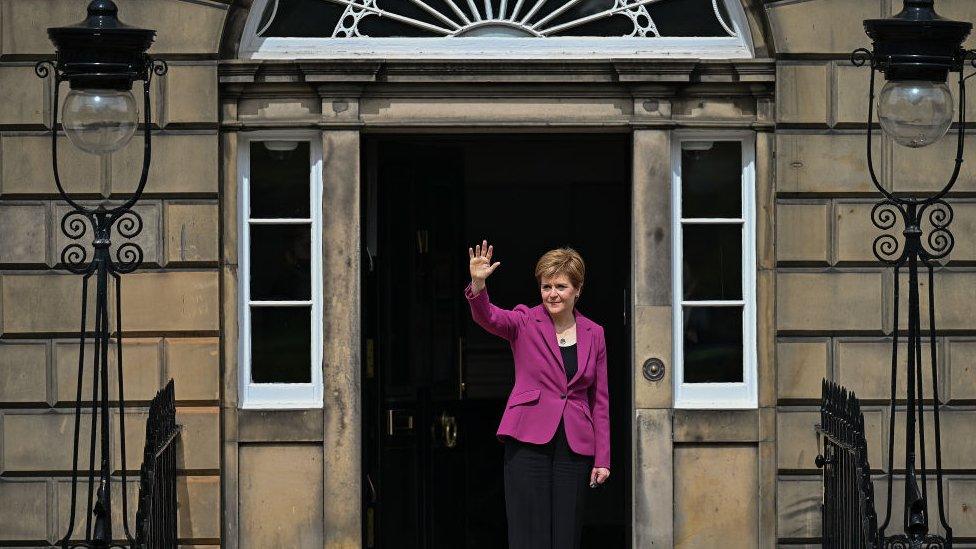Mark Drakeford: Why doesn't Wales' first minister have a residence?
- Published

Downing Street has served as a residence for the prime minister of the UK since 1735
The prime minister has Downing Street, the first minister of Scotland has Bute House in Edinburgh.
While two of the most senior politicians in the UK have places to stay provided by the state, no such building exists for the first minister of Wales.
It is a question that has been raised on social media and was discussed again at the weekend following protests outside Mark Drakeford's Cardiff home.
Some on Twitter called for the FM to be provided somewhere to live, with the suggestion it may be easier to secure.
But colleagues of Mr Drakeford do not believe he has any appetite for an officially provided residence.
And the reasons for its absence stretch back to a very different time for devolution - the late 1990s - when a new institution was being developed following a knife-edge referendum result.
One of the architects of the project, former Welsh Secretary Ron Davies, wanted to avoid the pomp and ceremony of Westminster and was against the idea.
The National Assembly of 1999, when it opened, has since been transformed. Its now a law-making parliament called the Senedd, and its ministers have their own organisation - the Welsh government.
Its current First Minister, Mark Drakeford, has a UK profile not shared by any previous office holder, largely because of the Covid crisis.

Mark Drakeford's profile as first minister is the highest of any of the men who have held the office
'Do away with pomp and circumstance'
But in the context of the tight result of the referendum, the Welsh secretary at the time wanted to keep with the public mood.
The topic of a residence for what was originally the first secretary was not subject of a formal discussion, Mr Davies explained.
But he said the matter was raised in government in light of Scottish plans for a more substantial residence for the first minister.
"My own instinctive view was that we didn't want that," Mr Davies said, aiming for a more informal assembly that would "do away with all the pomp and circumstance which is associated in parliament".
"My watchword, after the tightness of the result, was that we had to be very careful what we were doing, and we should be concerned as far as possible to build up a consensus - doing things which weren't going to be inflammatory, which weren't going to upset people, and which by and large kept with the mood of the times."
There was an eye on the cost to the taxpayer, too.
"I think the thrust of those of us on the Yes side was that it was going to be a very carefully run assembly, being conscious of public money, doing things properly and moving away from all the sort of pomp and ceremony which is associated with royalty and [the Westminster] parliament and all of those sorts of things."
Pre-devolution, the Welsh secretary did have access to a flat in what is now Welsh government headquarters in Cathays Park. Mr Davies, who was an MP for Caerphilly, said he never used it.

There was a flat for the Welsh Secretary in Cathays Park, the headquarters of the Welsh government
What are No 10 Downing Street and Bute House
No 10 Downing Street acts as the official residence of the prime minister, although Boris Johnson actually lives next door, in No 11.
The large building also serves as the prime minister's office and is where the PM hosts guests and receptions.
Sir Robert Walpole was the first prime minister to live there, in 1735.
Bute House is in Edinburgh's New Town and dates back to the late 18th Century.
The building is credited as being one of the finest Georgian architectural achievements of Edinburgh. It had been the residence of the Secretary of State for Scotland, prior to devolution.

'Unnecessary overcorrection'
If an official residence was ever seriously pursued it would be up to the Welsh political scene to sell the idea to the public.
Following the protests on Saturday Andrew RT Davies, Welsh Conservative Senedd leader said such a plan would be a "unnecessary overcorrection".
Rhun ap Iorwerth, deputy Plaid Cymru leader, said he was in "no doubt that Wales should have an official residence for a first minister like pretty much every other country".
But he did not link it with the issue of the protest on Saturday, saying it was "unacceptable to go and protest outside a private home".
Former first minister Carwyn Jones said he did not think a residence was needed to "avoid things like this".
"Northern Ireland's first minister doesn't have an official residence," he said.

Bute House is the official residence of the First Minister of Scotland
Mark Drakeford has wondered aloud about whether it might be needed in future, for a different reason.
"The day will come," he told ITV Wales' Sharp End earlier this year, "when the first minister will be from north Wales and that person will be needed to stay in Cardiff for lots of their working life.
"It's one thing doing it as I do from my own home, but it is a completely different matter if you don't have somewhere you can regard as your own base."
But Professor Laura McAllister of Cardiff University questioned whether it would be something that could win public support.
She suggested anything that suggested "aggrandisement of devolution" would get a "rocky reception from the public", and said it was "less salient" than tackling the number of politicians that are in the Senedd.
"I can't really see it getting any traction," she said, "even though there's probably a strong safety argument".
She added it may take the issue of a first minister who is not local to Cardiff before a residency was looked at, but that she does not see that happening "until that issue arises".